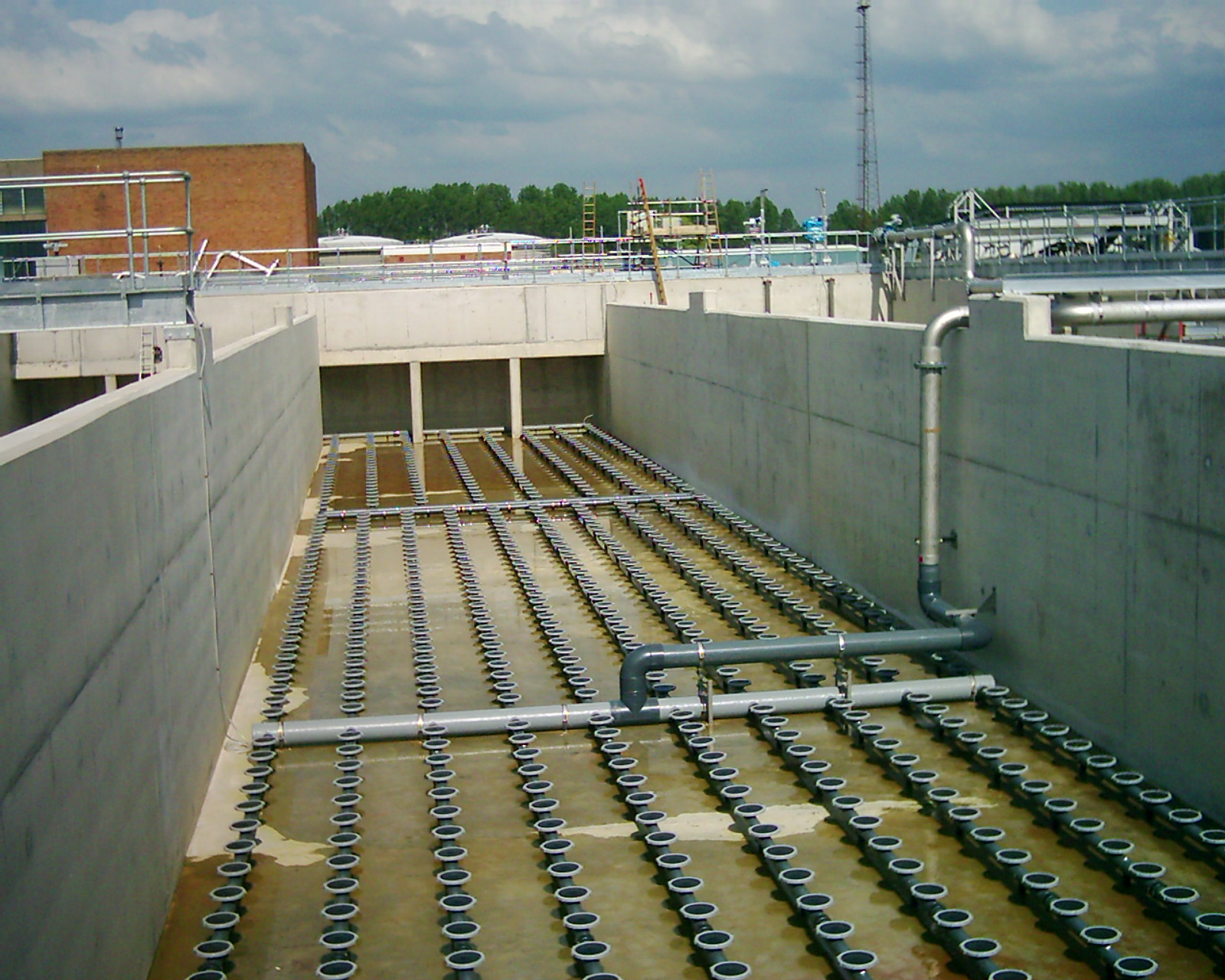

AERATION
Aeration serves three important functions :
- Mixing the returned sludge with effluent from primary treatment,
- Keeping the activated sludge in suspension, and
- Supplying the oxygen to the biochemical reactions necessary for the stabilization of the wastewater.
The theoretical oxygen requirement can be computed by knowing the BOD of the waste, the amount of organisms wasted from the system per day and the degree of treatment (whether a nitrified effluent is required). For practical purposes, enough air should be added to the waste to maintain at least 2 mg/ L of dissolved oxygen under all conditions of loading in all parts of the aeration tank. The air requirements for good treatment can be satisfied either by a diffused air system or by mechanical aerators.
Diffused air system
In the diffused air system, air under low pressure, generally not more than 6 m, is supplied by blowers and forced through various types of porous material in plates or tubes installed near the bottom of the aeration tank. As the air is discharged into the liquid phase it breaks up into fine bubbles thus increasing the surface area across which oxygen diffuses from air into the wastewater.
Diffusers
Diffusers may be in the form of either plates or tubes. Diffuser plates may be composed of fused crystalline alumina or high-silica sand. They are set in containers usually made of reinforced concrete. Diffuser tubes are made of similar material, or, more recently, of corrugated stainless steel pipe with multiple outlets and wrapped with saran twisted cord. These are suspended in the aeration tank in sections and can be disconnected above the wastewater surface and removed for cleaning or renewal. When installed on swing joint connections so that they may be brought to the surface of the tank, they are known as “Swing Diffusers”. To prevent clogging of the diffuser plates or tubes, the air supplied to them should be filtered to remove dust, oil or other impurities, and the piping should be of non-corrosive material. There are a number of types of filters available based on different principles which may be used alone or in combination.
The specification of the porous diffuser system is furnished below:
- Materials:
- ceramic
- rigid plastic
- perforated membrane (flexible plastic or rubber)
- Configuration:
- Plate disc : 18 to 25 cm diameter for ceramic and plastic
- 20 to 50 cm diameter for membranes
- dome : 18 cm diameter
- tubular : 6 to 8 cm diameter x 50 – 60 cm long
- Layout:
- grid arrangement to produce uniform aeration
- side arrangement to produce a single or dual spiral roll flow pattern.
Nonporous diffusers
Types:
- Fixed orifice diffusers (perforated piping spargers slotted tube)
- Valved orifice diffuser
- Static diffusers
Layout : similar to porous diffuser systems
Application : commonly employed where mixing is more important than oxygen demand.
Blower design Types of blowers
There are two types of blowers; centrifugal turbine blower and rotary positive displacement blowers.
Centrifugal turbines
- Advantages are less noisy, smaller foundation and variable air flow rate
- Disadvantages are limited operating pressure range, and reduced volume of air when increasing the back pressure due to clogging
Rotary positive displacement
- Advantage is the wide range of discharge pressure
- Disadvantages are limited range of air flow rate, more noisy and high maintenance requirement
Leave a Reply







 LIKE TO GET UPDATES
LIKE TO GET UPDATES  TO GET EXPERT GUIDE
TO GET EXPERT GUIDE